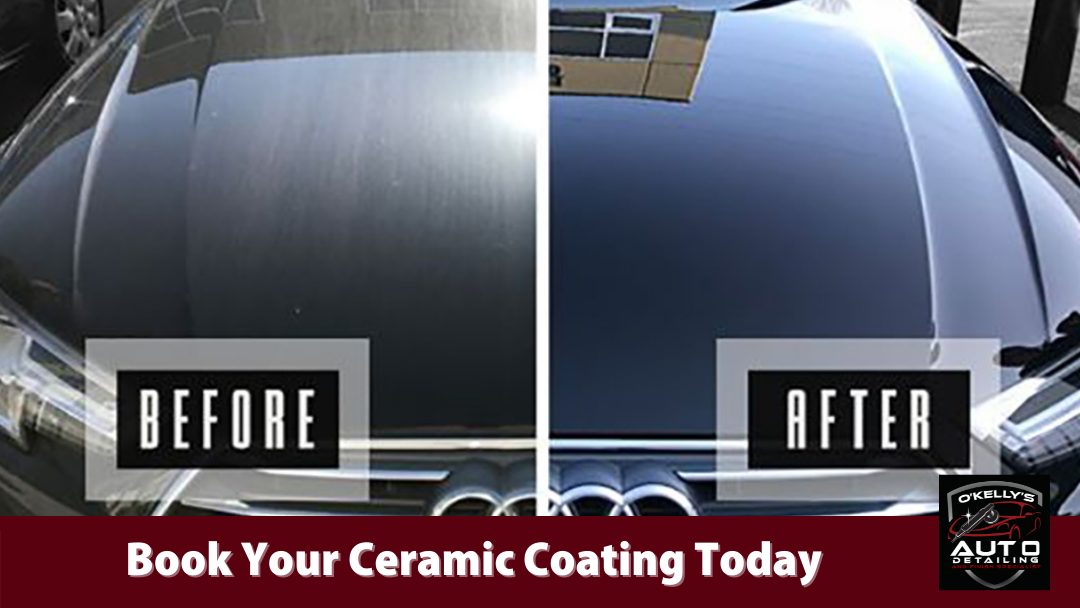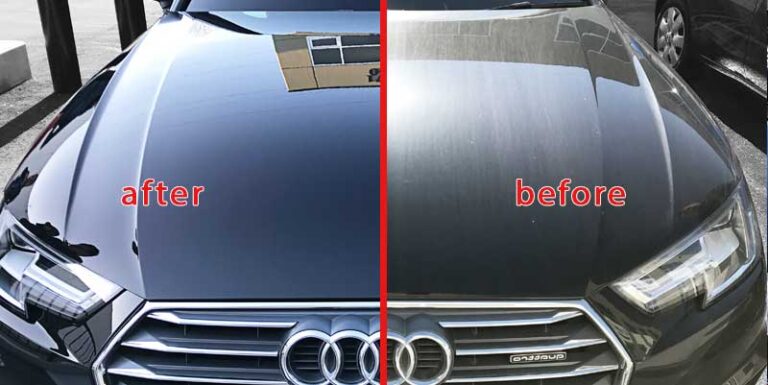Just How Ceramic Coating Philadelphia Improves Your Vehicle's Luster and Protection
Just How Ceramic Coating Philadelphia Improves Your Vehicle's Luster and Protection
Blog Article
Why Ceramic Finishing Is the Ultimate Remedy for a Remarkable Complete
Ceramic finishing has arised as a leading service for those looking for a perfect finish for their automobiles, thanks to its remarkable durability and safety features. This advanced liquid polymer not just bonds effortlessly with manufacturing facility paint but also supplies an awesome obstacle versus common threats such as scratches, UV rays, and environmental contaminants. Its hydrophobic properties simplify upkeep while improving visual charm. Recognizing just how this modern technology contrasts to traditional methods and discovering its application subtleties can disclose also more concerning its value. What elements absolutely set ceramic finishing apart?
What Is Ceramic Finish?

When used properly, ceramic coating creates a hydrophobic surface that fends off water and dirt, making it much easier to preserve and clean. Unlike traditional waxes or sealers, which usually use brief security, ceramic finishes can last for numerous years, relying on the item top quality and application approach. The procedure of using ceramic coating calls for meticulous preparation, consisting of extensive cleaning and often paint improvement, to ensure optimum bonding and effectiveness.
Ceramic coverings are not limited to automobile surfaces; they can likewise be utilized on numerous products, including glass, steel, and plastics, giving a versatile option for enhancing defense. On the whole, ceramic covering represents a considerable improvement in surface area defense modern technology, incorporating both practical and aesthetic advantages for a variety of applications.
Advantages of Ceramic Coating
While many surface area security options exist, the benefits of ceramic finishing attract attention because of its distinct buildings and resilient efficiency. One of the key advantages is its exceptional durability. Ceramic Coating Philadelphia. Unlike standard wax or sealants that need frequent reapplication, ceramic coverings provide a resistant layer that can last for numerous years, considerably lowering maintenance initiatives
One more noteworthy advantage is enhanced security versus environmental impurities. Ceramic finishings produce a hydrophobic surface that pushes back water, dirt, and numerous toxins, making it simpler to cleanse. This attribute not just maintains the automobile's look however additionally lessens the risk of rust and oxidation, specifically in rough climate condition.
Furthermore, ceramic finishes supply exceptional resistance to UV rays, preventing fading and deterioration of paint over time. This UV security is important for preserving the aesthetic worth of lorries and surfaces revealed to guide sunshine.
Additionally, the glossy coating attained with ceramic finish improves the total aesthetic allure, giving surfaces a showroom-quality luster. On the whole, ceramic layers stand for a significant development in surface defense innovation, offering long-lasting advantages that deal with both useful and aesthetic requirements.
Exactly How It Functions
Recognizing the science behind ceramic finishings reveals exactly how they supply such impressive protection and longevity. At its core, a ceramic covering is a fluid polymer that chemically bonds with the lorry's manufacturing facility paint.
The application procedure entails multiple actions, consisting of surface area preparation, which is essential to accomplishing optimal adhesion. Once applied, the layer goes through a healing procedure, during which it hardens and develops a semi-permanent bond with the paint surface. This bond is what identifies ceramic coatings from standard waxes and sealers, providing a longer-lasting protective barrier that can withstand for several years.
Furthermore, the thickness of the covering can improve its safety qualities, making sure that it can hold up against rough problems. Inevitably, the scientific research of ceramic coverings integrates advanced products with cutting-edge application methods to supply an exceptional degree of protection and aesthetic improvement for automobiles.
Contrast With Typical Techniques
When compared to typical paint protection methods such as waxes and sealers,The benefits of ceramic layers come to be specifically apparent. While waxes provide a short-lived luster, usually lasting a couple of weeks to a number of months, ceramic coatings provide a lasting safety layer that can withstand for description several years. This toughness substantially decreases the regularity of reapplication, making ceramic layers a more cost-effective remedy gradually.
In addition, conventional methods typically require considerable prep work and numerous applications to achieve a satisfying degree of security. On the other hand, ceramic layers bond at a molecular level with the lorry's surface area, creating a durable shield versus ecological pollutants like UV rays, acid rain, and roadway salts. This bond boosts the car's resistance to scrapes and swirl marks, which are prevalent with conventional waxes and sealers.
Moreover, the hydrophobic properties of ceramic finishes push back water and dirt, leading to less complicated cleansing and upkeep. In contrast, wax and sealant-treated surface areas can attract grime, requiring more regular cleaning - Ceramic Coating Website Philadelphia. Generally, ceramic finishings not just supply superior security yet also provide a much more long-lasting and aesthetically enticing surface, developing them as the favored selection for discerning automobile proprietors
Application and Upkeep Tips

Making use of a foam applicator, use the finish in little sections, complying with the maker's standards pertaining to thickness and overlap. Allow enough curing time in between coats, usually 1 day, to ensure proper bonding. After application, it is essential to avoid direct exposure to water or severe elements for at the very least a week to enable the coating to completely heal.
For maintenance, clean the car regularly with pH-balanced soaps and prevent rough materials. Touchless car cleans are suggested to reduce scraping. Furthermore, utilizing a ceramic maintenance spray can boost the finish's hydrophobic residential or commercial properties and long life. Regular examinations for any indicators of wear will assist keep the coating's integrity and preserve that excellent finish.
Verdict
Finally, ceramic covering becomes a premium alternative for accomplishing a perfect automotive surface. Its exceptional sturdiness, protective high qualities, and hydrophobic residential or commercial properties considerably improve the automobile's look while Look At This streamlining maintenance efforts. By creating a durable bond with factory paint, ceramic covering efficiently shields versus scrapes, UV rays, and ecological impurities. With a life-span prolonging a number of years, this sophisticated solution not just preserves but likewise elevates the total aesthetic allure of automobiles, making it a cost-effective investment for vehicle lovers.

Report this page